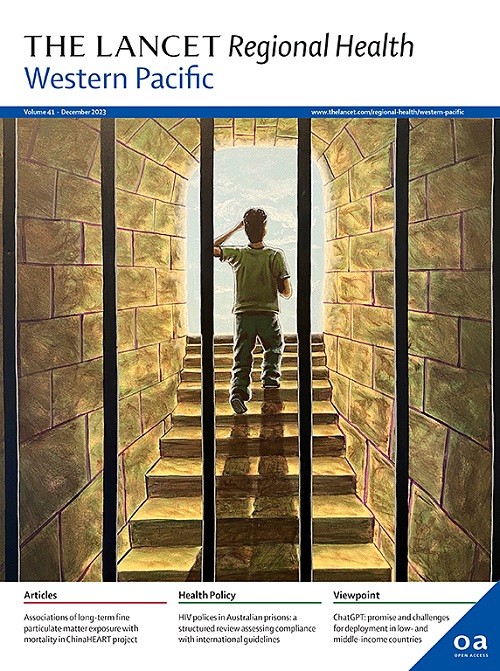Prevalence of surgery in Indigenous people with cancer: a systematic review and meta-analysis
IF 7.6
1区 医学
Q1 HEALTH CARE SCIENCES & SERVICES
引用次数: 0
Abstract
Background
As cancer incidence increases globally, so does the prevalence of cancer among Indigenous peoples. Indigenous peoples face significant barriers to healthcare, including access to and uptake of surgery. To date, the synthesis of access to and uptake of surgery for Indigenous peoples living with cancer has not yet been reported.
Methods
We conducted a systematic literature review and meta-analysis of access to and uptake of surgery for Indigenous peoples in Canada, Australia, New Zealand, and the United States. Five databases were searched to identify studies of Indigenous adults with cancer and those who received surgery. The Joanna Briggs Institute critical appraisal tools were used to assess the quality and inclusion of articles. Random effect meta-analyses were conducted to estimate the pooled prevalence of surgery in Indigenous people with cancer.
Findings
Of the 52 studies in the systematic review, 38 were included in the meta-analysis. The pooled prevalence of surgery in Indigenous people with cancer was 56.2% (95% confidence interval (CI): 45.4–66.7%), including 42.8% (95% CI: 36.3–49.5%) in the Native Hawaiian population, 44.5% (95% CI: 38.7–50.3%) in the Inuit and 51.5% (95%CI: 36.8–65.9%) in Aboriginal and Torres Strait Islander people. Overall, Indigenous people received marginally less cancer surgery than non-Indigenous people (3%, 95% CI: 0–6%). Indigenous people were 15% (95% CI: 6–23%) less likely to receive surgery than non-Indigenous people for respiratory cancers. Remoteness, travel distance, financial barriers, and long waiting times to receive surgery were factors cited as contributing to lower access to surgery for Indigenous people compared to non-Indigenous people.
Interpretation
Efforts to improve access and use of cancer services and surgery for Indigenous peoples should be multilevel to address individual factors, health services and systems, and structural barriers. These determinants need to be addressed to expedite optimal care for Indigenous peoples, especially those living in outer metropolitan areas.
Funding
The Research Alliance for Urban Goori Health (RAUGH) funded this project. GG was funded by an NHMRC Investigator Grant (#1176651).
土著癌症患者的手术患病率:一项系统回顾和荟萃分析
随着全球癌症发病率的增加,土著人民的癌症患病率也在增加。土著人民在保健方面面临重大障碍,包括获得和接受手术。迄今为止,尚未有关于土著癌症患者获得和接受手术的综合报告。方法我们对加拿大、澳大利亚、新西兰和美国土著人获得和接受外科手术的情况进行了系统的文献回顾和荟萃分析。研究人员检索了5个数据库,以确定土著成人癌症患者和接受手术的研究。使用乔安娜布里格斯研究所的关键评估工具来评估文章的质量和纳入情况。随机效应荟萃分析用于估计土著癌症患者手术的总流行率。在系统综述的52项研究中,有38项纳入了荟萃分析。原住民癌症患者的手术总患病率为56.2%(95%可信区间(CI): 45.4-66.7%),其中夏威夷原住民42.8% (95%CI: 36.3-49.5%),因纽特人44.5% (95%CI: 38.7-50.3%),原住民和托雷斯海峡岛民51.5% (95%CI: 36.8-65.9%)。总体而言,土著人接受癌症手术的人数略少于非土著人(3%,95% CI: 0-6%)。土著居民接受呼吸系统癌症手术的可能性比非土著居民低15% (95% CI: 6-23%)。与非土著人相比,偏远、旅行距离、经济障碍和接受手术的等待时间过长是导致土著人接受手术的机会较低的因素。改善土著人民获得和使用癌症服务和手术的努力应该是多层次的,以解决个人因素、卫生服务和系统以及结构性障碍。需要解决这些决定因素,以加快为土著人民,特别是生活在大都市外围地区的土著人民提供最佳护理。城市古里健康研究联盟(RAUGH)资助了这个项目。GG由NHMRC调查员资助(#1176651)。
本文章由计算机程序翻译,如有差异,请以英文原文为准。
求助全文
约1分钟内获得全文
求助全文
来源期刊

The Lancet Regional Health: Western Pacific
Medicine-Pediatrics, Perinatology and Child Health
CiteScore
8.80
自引率
2.80%
发文量
305
审稿时长
11 weeks
期刊介绍:
The Lancet Regional Health – Western Pacific, a gold open access journal, is an integral part of The Lancet's global initiative advocating for healthcare quality and access worldwide. It aims to advance clinical practice and health policy in the Western Pacific region, contributing to enhanced health outcomes. The journal publishes high-quality original research shedding light on clinical practice and health policy in the region. It also includes reviews, commentaries, and opinion pieces covering diverse regional health topics, such as infectious diseases, non-communicable diseases, child and adolescent health, maternal and reproductive health, aging health, mental health, the health workforce and systems, and health policy.
 求助内容:
求助内容: 应助结果提醒方式:
应助结果提醒方式:


